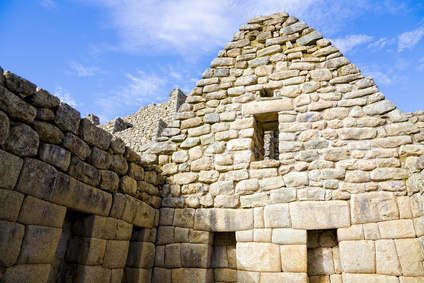The Palace of the Princess or the Ñusta Palace
 The complex structure of the Incan society defined several classes that even influenced the high aristocratic areas. That is why not all the members of the nobility possessed the same privileges, because these distinctions were awarded according to the lineage. The Royal Ayllus therefore representing the nobility of blood which would be thus constituted by the direct descendants of the King and that they were called Panacas. This class comprised the Queen or Colla, brides, princesses or Pallas, the sons of the nobility of blood and the Ñustas or Princesses not married yet.
The complex structure of the Incan society defined several classes that even influenced the high aristocratic areas. That is why not all the members of the nobility possessed the same privileges, because these distinctions were awarded according to the lineage. The Royal Ayllus therefore representing the nobility of blood which would be thus constituted by the direct descendants of the King and that they were called Panacas. This class comprised the Queen or Colla, brides, princesses or Pallas, the sons of the nobility of blood and the Ñustas or Princesses not married yet.
Machu Picchu has been considered as a sanctuary for the Inca civilization which, according to the studies of expert anthropologists and historians, could have served to give asylum to the Virgin princesses of the Empire known as princesses of the Sun or Ñustas, after the arrival of the Spanish conquistadors. These theories are based on the fact that archaeological excavations have discovered that most of the human remains found in burial chambers belonged to women.
The Ñusta Palace is located in the same architectural ensemble where is located the Temple of the Sun by what came to be considered part of the temple and not as a building with its own independent character. However, the experts found a very close relationship between the Ñusta Palace and the Temple of the Sun since the Palace was not only an annex to the Temple of the Sun, but it was noted for being a building through laborious and refined methods of construction, techniques that were reserved only for the most important buildings of the city. The fact of being annexed to the Temple of the Sun has awarded many other denominations with names such as House of the Ñusta or cloister of the Ñusta.
The building clearly had a very special character to civilization due to the fine work of masonry which can be seen simply to observe the entry that gives way to the camera. The House was planned to house the residence of one of the most important members of the aristocracy of the city, so that experts on anthropology, to continue more extensively with his research, came to the conclusion that this would have undoubtedly been the place of residence is housed where the Priestess, because the priests had a very high social status within the aristocracy of the Incan society. However, is has not discarded the theory that this building would have been designated as the antechamber to accommodate the princesses that would form part in different rituals and sacrifices of the Inca culture.
The Ñusta Palace or Palace of the Princess stood on two floors, built by a conglomeration of solid rocks finely carved to facilitate the settlement of the building while he showed an excellent quality in the work of construction. Through a small gate located at the flat top of the Palace, you can directly access an antechamber which then communicates with the Tower of the Temple of the Sun. However, it has been deduced over time that this door would have been a window and not a door, due to the similarity with another small quadrilateral window which owns the Palace, from where you can see the different balconies of Machu Picchu.